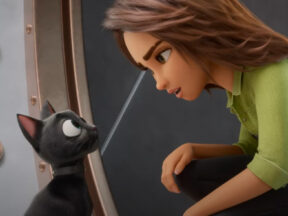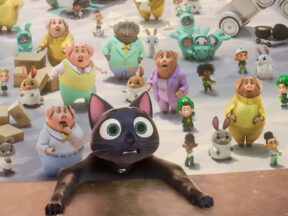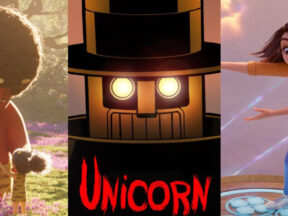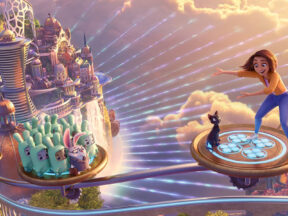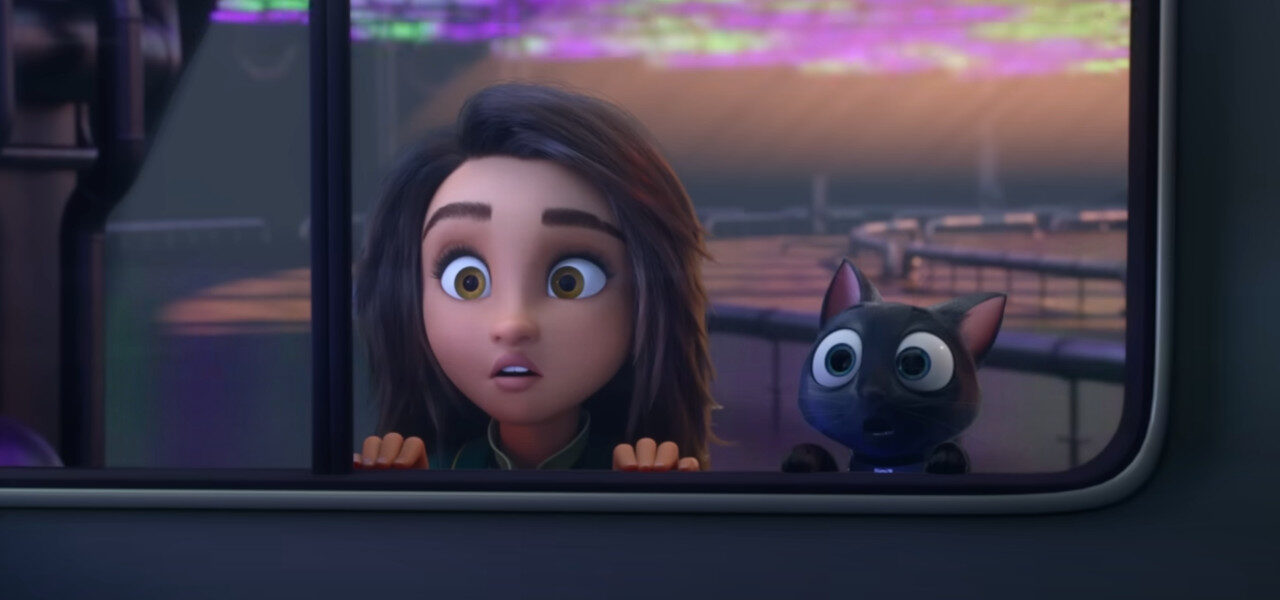
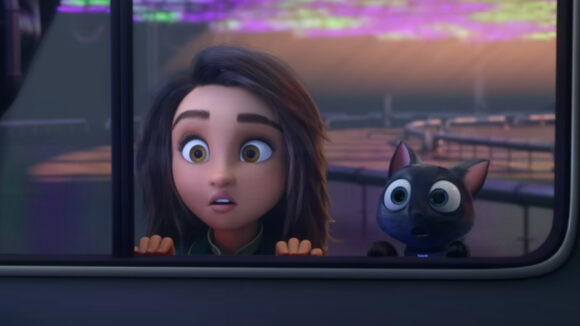
‘Luck’ Reviews Roundup: Skydance Animation’s First Feature Is Out Of Luck With Critics
To say it’s been a rocky road to release day for the team at Luck would be an understatement, but at long last Apple+’s first animated feature with Skydance Animation will hit the platform on Friday.
Directed by Peggy Holmes (The Little Mermaid: Ariel’s Beginning, Secret of the Wings), and written by Kiel Murray, Jonathan Aibel, and Glenn Berger, Luck is the story of unlucky Sam, seeking an explanation in the Land of Luck for the forces that drive her life’s twists and turns. Luck’s voice cast includes Broadway star Eva Noblezada as Sam and Simon Pegg as the lucky Scottish black cat Bob. Joining them are Jane Fonda, Whoopi Goldberg, Colin O’Donoghue, Lil Rel Howery, Flula Borg, John Ratzenberger, and Adelynn Spoon.
Critical reactions share some themes. For one, it’s hard to cast an animated black cat without drawing comparisons to Jiji in Kiki’s Delivery Service. Another is that the plot is long and complex, bordering on too complex. And lastly, many are inevitably comparing the cg film to those produced by Pixar, especially since long-time Pixar and Disney creative chief John Lasseter is now in charge at Skydance Animation.
To put it in measurable terms, early scores ahead of the film’s release include a 47% mark on Rotten Tomatoes and a 50 on Metacritic. Here’s what the critics are saying:
Carlos Aguilar gave a fairly favorable review for The Wrap:
Although Luck can’t reach the sophistication level of the best Pixar features, it stands as a far more accomplished effort from a technical standpoint and in the resonance of its story than the dime-a-dozen, talking-animal cash cows infested with vapid pop-culture references that have become the new standard in Hollywood animated releases.
Chief critic at The Telegraph, Robbie Collins, says the film hits where it counts:
Sparklingly directed by Peggy Holmes, a Lasseter protégée who served her time on two straight-to-video Tinker Bells, Luck contains all the warmth and ingenuity that was nowhere to be found in Pixar’s own recent Lightyear, and has the attitude – if not always the supreme clarity and craftsmanship – of his old studio’s vintage productions.
Amy Amatangelo at Paste, however, was less impressed:
The plot of Luck is far too dense and convoluted. I suspect the movie’s target audience won’t have the patience for it. Maybe they will be distracted by the sparkly crystals and funny unicorns. But at 106 minutes, the movie’s length and intricate plot will probably leave most kids slightly bored. (In my very unscientific study of two children, the movie kind of lost them at the midway point.)
Hoai-Tran Bui of Slashfilm placed the film against Ghibli and Pixar projects and was unimpressed:
Luck might be a fun time if it weren’t so clearly reminiscent of other, better movies. But apart from some genuinely stunning visuals (the design of the Land of Luck in particular is a beautiful piece of retrofuturism with a fantasy twist), Luck can’t help but feeling like a Ghibli film processed through a Pixar formula. The gentle whimsy and imaginative world of Ghibli is there, as is the Pixar tendency to cleverly turn high-concept ideas into mundane bureaucratic structures. It doesn’t help that its story and even some of its imagery is plainly inspired by Ghibli’s The Cat Returns, a 2002 fantasy film directed by Hiroyuki Morita that followed a teenage girl who finds herself invited to the fantastical land of cats. The funny thing is, Pixar has taken elements from Ghibli films before (Lasseter is a known fan of the Japanese animation studio), but recycled them in exciting and interesting ways – the Spirited Away influences in Coco and the ecstatic flight scene in Toy Story being just a couple. In Luck, those nods only feel like a halfhearted way to capture the magic of both Ghibli and Pixar.
David Ehrlich of Indiewire also drew comparisons to Ghibli and Pixar and felt that Luck came up short:
The magical world of Luck has none of the workaday creativeness that allowed Monsters, Inc. to tickle the imagination, none of the narrative integrity that allowed Inside Out to conflate characters with emotions, and none of the wonder that allowed the bathhouse in Spirited Away to seem like a real place that existed just out of sight. Credited to Jonathan Aibel, Glenn Berger, and Kiel Murray, the film’s script isn’t arranged like a story so much as a parade of semi-related stimuli. Here are some bunnies in hazmat suits, there’s a dragon voiced by Jane Fonda, now Sam has to pretend that she’s Latvian (don’t ask). That building seems copy-pasted from Asgard, those two are connected by high-speed bumper cars, and all of them seem to be made out of plastic.

.png)
